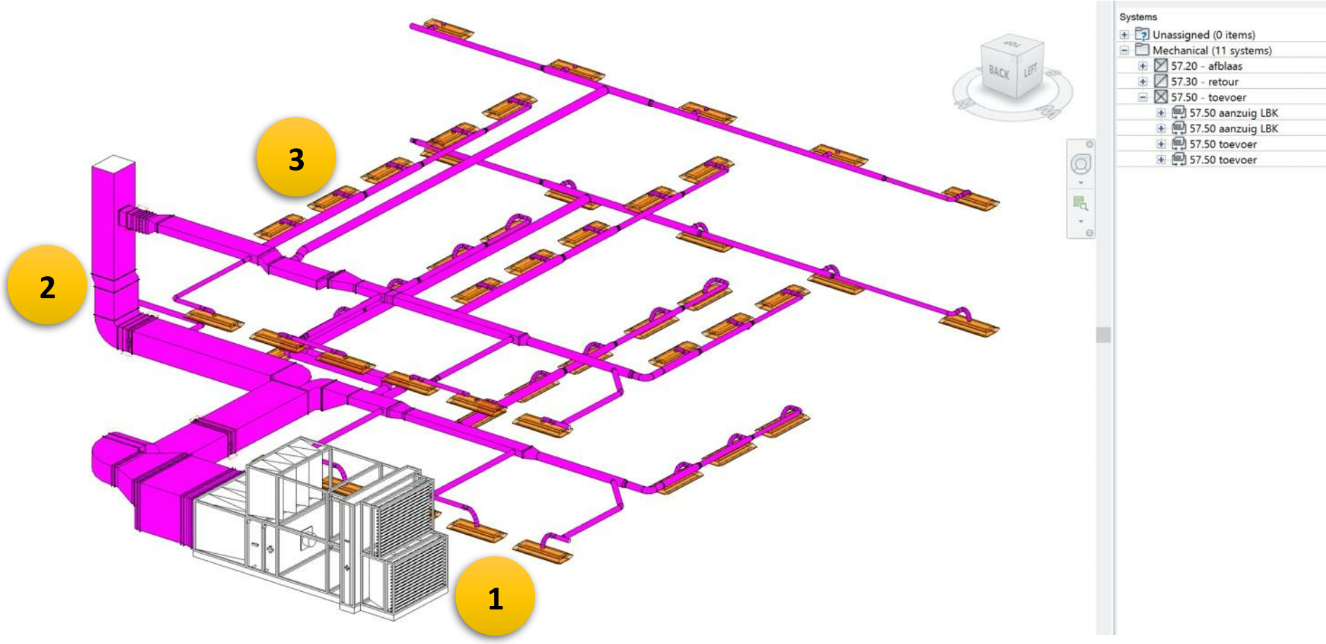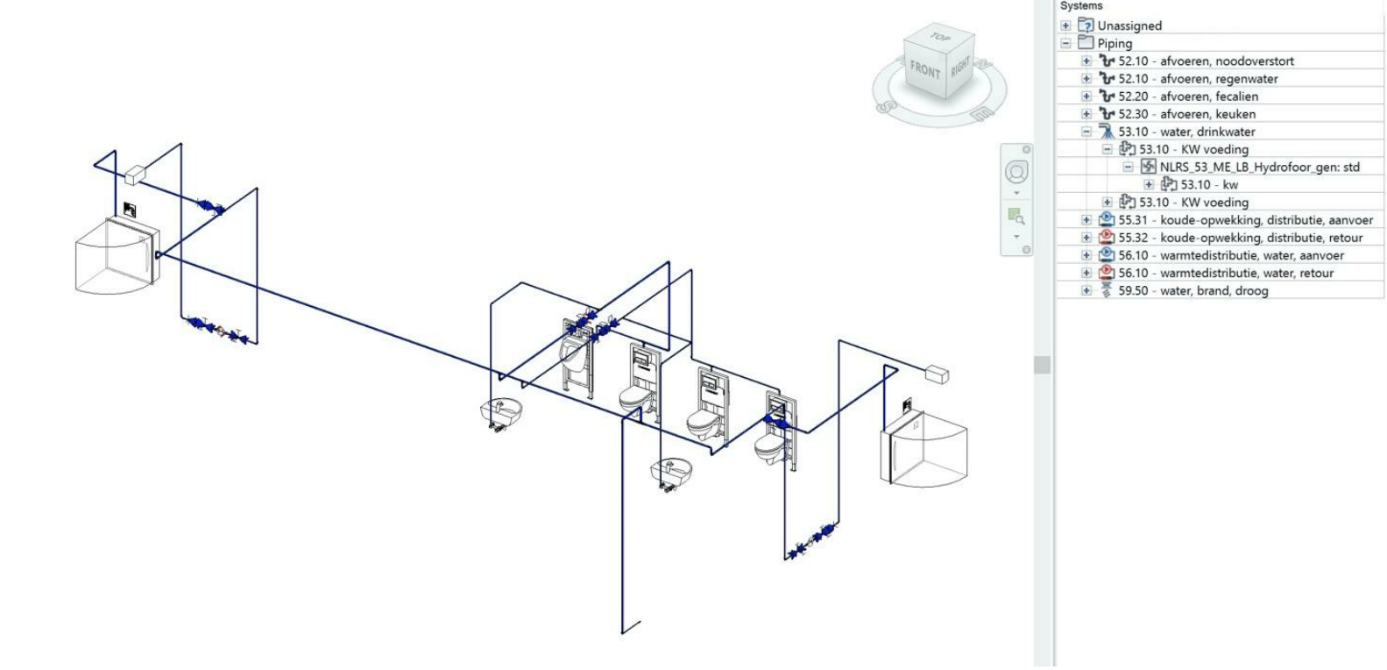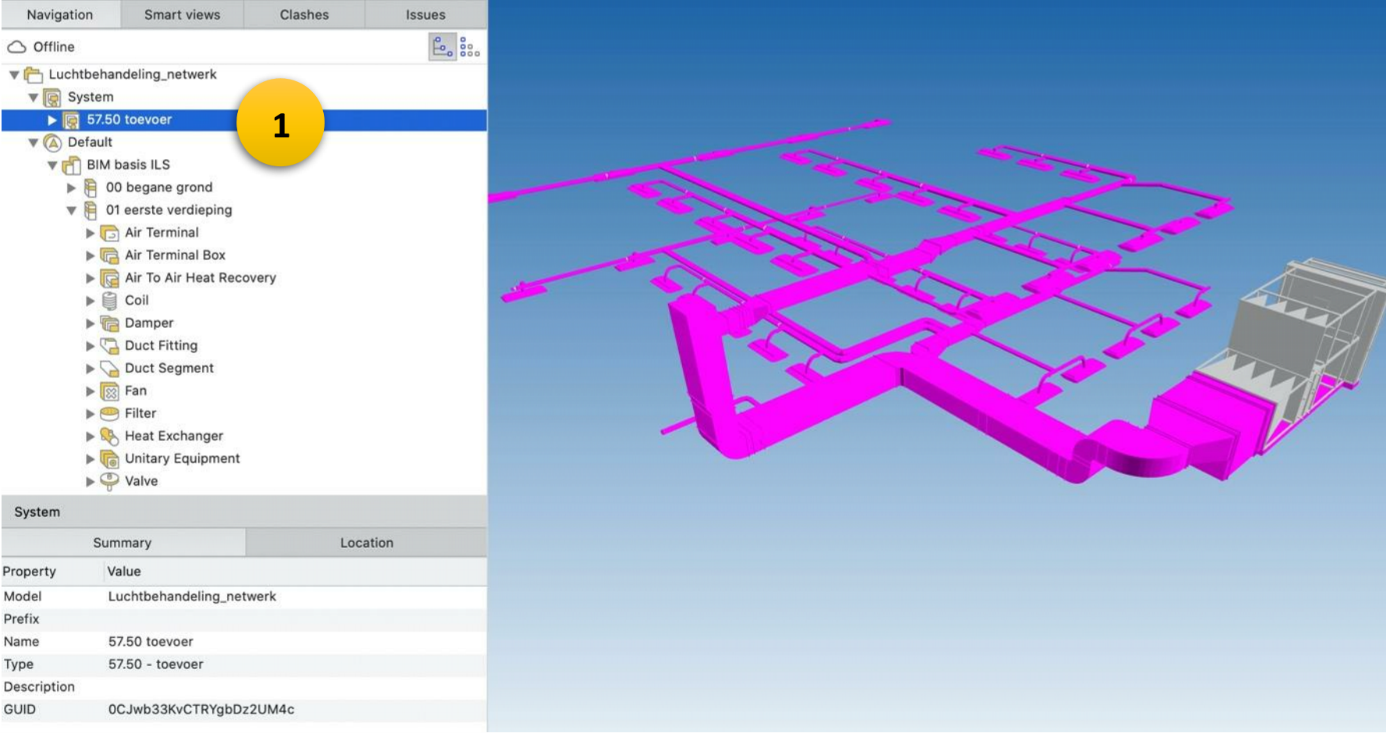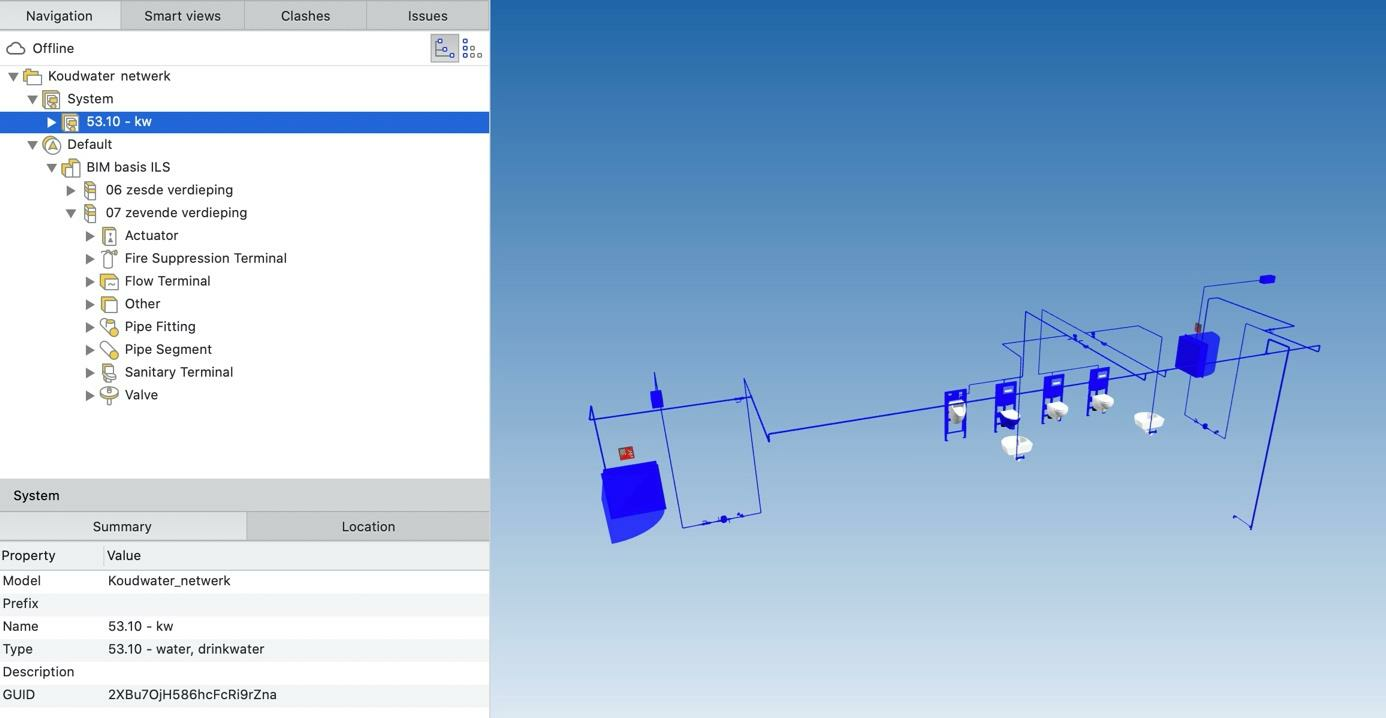Building services related systems
What are systems?
This agreement is intended to clarify the mutual relationship between building services objects within the BIM, based on technical installation systems (which in IFC is covered by IfcSystem).
A system is an organised combination of related installation components, which together provide a service for a common purpose or function. A system is thus a functionally related collection of products. The IfcSystem is a relationship definition or grouping relationship.
Differentiation
Different types of components are grouped with each other using an IfcSystem. For example source+distribution+delivery point are grouped together with the relationship definition IfcSystem. We can distinguish three types of building services objects:
Source
For example: an electrical distribution board, air handling unit, heat pump
- An electrical distribution board is for example an IfcElectricDistributionBoard.
- An air handling unit consisting of several parts is for example a IfcEnergyConversionDevice (Heat exchanger) IfcFlowMovingDevice (Fan).
- A heat pump is for example an IfcEneryConversionDevice.
Distribution
For example: pipes, ducts and cables
- Pipes are IfcFlowSegment and IfcPipeSegment.
- Ducts are IfcFlowSegment and IfcDuctSegment.
- Cables are IfcFlowSegment and IfcCableSegment.
Delivery points
For example: grilles, wall sockets, light fittings, toilet bowls
- Delivery points are all objects that require a liquid, gas or electricity to perform their intended function.
- Toilet bowls are IfcFlowTerminal and require water and deliver something to the sewer.
- From a delivery point, data is passed on to the IfcSystem about, for example, air quantity.
Air handling unit
In Figure 4.2.1 we give an example of how grouping can look like in modelling software. The naming convention is up to each user, in this example we have used the NL-SfB coding, because this code gives a clear picture of what the air ducts and all accessories are connected to.

Figure 4.2.1: Air handling unit
This example includes an air handling unit (1,) with a system of air ducts (2) connected to receivers (3), in this case induction units. This is an IfcSystem with the following properties:
- The type is 57.50 - supply (SupplyAir)
- The name for this system is 57.50 - supply
Cold water pipework system
A cold water piping system (Figure 4.2.2) contains receivers, such as fire hose reels, built-in cisterns, and so on. In addition, this system also contains valves, such as stop valves and check valves. The design is the same as for the air ducts, i.e. with the NL-SfB coding. This makes it clear that cold water runs through this system of copper pipes.

Figure 4.2.2: Cold water pipe system
This IfcSystem has the following properties:
- The type is 53.10 – water, drinking water (DomesticColdWater)
- The name for this system is 53.10 – cw
Exporting to IFC
For both examples, when exporting a model to IFC, the system is included in the export (Figure 4.2.3 and 4.2.4). With this system, all associated elements can be selected and, for example, assigned a colour. In the IFC model, it is therefore easy to determine the function of an object.

Figure 4.2.3: System as a separate section
When exporting a model to IFC, the system becomes visible in the IFC model as a separate section (1).

Figure 4.2.4: Identifying objects
The objects can be clearly identified in the export as an object serving the cold water network.